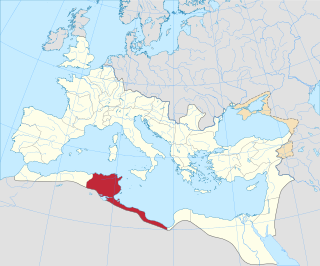
Egnatia, Byzacena is an ancient civitas of the Roman Province of Byzacena in North Africa. [1] [2] [3] [4] The exact location of the town is not known, but was in the Sahel region of Tunisia.

Ancient history as a term refers to the aggregate of past events from the beginning of writing and recorded human history and extending as far as the post-classical history. The phrase may be used either to refer to the period of time or the academic discipline.

In the history of Rome, the Latin term civitas, according to Cicero in the time of the late Roman Republic, was the social body of the cives, or citizens, united by law. It is the law that binds them together, giving them responsibilities (munera) on the one hand and rights of citizenship on the other. The agreement (concilium) has a life of its own, creating a res publica or "public entity", into which individuals are born or accepted, and from which they die or are ejected. The civitas is not just the collective body of all the citizens, it is the contract binding them all together, because each of them is a civis.
Byzacena was a Late Roman province in the central part of Roman North Africa, which is now roughly Tunisia, split off from Africa Proconsularis.
The town was in ancient times the seat of an ancient Roman Catholic bishopric. [5] Today the bishopric survives as a titular Bishopric and the current bishop of the town is Dionisio Lachovicz [6] [7]

A cathedra or bishop's throne is the seat of a bishop. It is a symbol of the bishop's teaching authority in the Catholic Church, the Orthodox Church, and the Anglican Communion churches. Cathedra is the Latin word for a chair with armrests, and it appears in early Christian literature in the phrase "cathedrae apostolorum", indicating authority derived directly from the apostles; its Roman connotations of authority reserved for the Emperor were later adopted by bishops after the 4th century. A church into which a bishop's official cathedra is installed is called a cathedral.
A bishop is an ordained, consecrated, or appointed member of the Christian clergy who is generally entrusted with a position of authority and oversight.

Bishop Dionisio Paulo Lachovicz, O.S.B.M., is a Brazilian-born Ukrainian Greek Catholic hierarch. He is currently Apostolic Visitor for the Ukrainian Greek Catholics in Italy and Spain. Prior to this appointment, he served as a Curial Bishop of the Major Archeparchy of Kyiv-Halych from December 21, 2005, until January 19, 2009, under the title of Titular Bishop of Egnatia.





